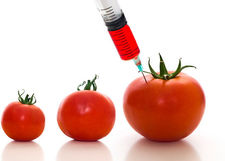
Blog
Gluten Free and Putin Free: The Effects of the Russian Embargo on Growers
June 01, 2016
 A couple of years ago we ran an advertisement for our Covington Vodka that exclaimed our vodka was both “Gluten Free and Putin Free”. This fun advertisement was meant to create awareness for our American made product, but now is more relevant than ever.
A couple of years ago we ran an advertisement for our Covington Vodka that exclaimed our vodka was both “Gluten Free and Putin Free”. This fun advertisement was meant to create awareness for our American made product, but now is more relevant than ever.
As a result of the imposed western sanctions for Russia’s involvement in Ukraine in 2014, President Vladimir Putin announced a ban on all produce and food imports from western countries. In the past week, there have been talks to extend this ban beyond 2018. This policy has had a dramatic effect on both the global economy and Russian economy. In fact, some reports suggest that Russia’s economy has shrunk by 4% in 2015, when it could have gained up to 5% of growth without this policy. To find out more about the effects of this policy read this article.
The consequences of this embargo go further than just having an adverse effect on the Russian economy. Prior to the embargo, Russia was importing $1.5 billion from US growers and $15.8 billion from European farmers. Production in Europe and North America has stayed the same causing an increase in supply of products. Economics 101 states that when supply goes up, but demand decreases, prices fall. Although I don’t have the estimated revenue lost by farmers as a result of this price decrease, I am guessing it is much larger than people think. We, ourselves, have lost out in multi millions of dollars in revenue because of the Embargo.
Every industry is now a part of the globalized economy. I know we cannot instantaneously deliver our produce with a click of the mouse around the world, but around 30% of our business is exports. Leaders need to understand the global ramifications of their policies. This is especially true when dealing with products that are essential to survival. So how do we solve this problem? My suggestion; send Putin a bottle of our Covington Vodka to open up the dialogue. Anyone have his address?
4 Restaurant Trends in 2016 that Will Fuel Agricultural Growth in North Carolina
May 18, 2016
 This weekend, we will be attending the National Restaurant Association tradeshow in Chicago, Illinois. Such an event makes me realize how passionate we are, here in eastern North Carolina, about our food. In the past 10 years, there has been a resurgence of southern cuisine that has allowed smaller towns in the region to gain national recognition for their cuisine. This has not only made the locals happy, it has driven economic growth in areas where big industry has all but left. One example is Kinston, North Carolina. In the beginning of the 20th century, Kinston had a booming tobacco and cotton industry with more than 5 million pounds of tobacco being sold every year. As a result, a flourishing real estate industry emerged driving prices sky high, with some parcels of land increasing 5 fold. Fast forward to present day and the tobacco and cotton industries are all but gone, making Kinston one of the most economically challenged areas in the state. Even with the loss of big industries, the culinary economy in the area is as strong as ever. Restaurants like Chef & the Farmer, owned and operated by the James Beard awarded chef Vivian Howard, have garnered worldwide attention that has driven economic growth in the area.
This weekend, we will be attending the National Restaurant Association tradeshow in Chicago, Illinois. Such an event makes me realize how passionate we are, here in eastern North Carolina, about our food. In the past 10 years, there has been a resurgence of southern cuisine that has allowed smaller towns in the region to gain national recognition for their cuisine. This has not only made the locals happy, it has driven economic growth in areas where big industry has all but left. One example is Kinston, North Carolina. In the beginning of the 20th century, Kinston had a booming tobacco and cotton industry with more than 5 million pounds of tobacco being sold every year. As a result, a flourishing real estate industry emerged driving prices sky high, with some parcels of land increasing 5 fold. Fast forward to present day and the tobacco and cotton industries are all but gone, making Kinston one of the most economically challenged areas in the state. Even with the loss of big industries, the culinary economy in the area is as strong as ever. Restaurants like Chef & the Farmer, owned and operated by the James Beard awarded chef Vivian Howard, have garnered worldwide attention that has driven economic growth in the area.
Not only does eastern North Carolina have a growing culinary industry, but the region continues to supply some of the top restaurants worldwide with produce straight from the farm. Here are 4 restaurant trends in 2016 that will continue to drive growth for eastern North Carolina farmers. All percentages were gathered by a survey conducted by the National Restaurant Association.
1. Locally Grown Produce
77% of survey participants pointed to locally grown produce as a hot trend in 2016. This is the highest percentage in the entire produce category, in front of organic produce. Restaurant goers still like to know where their produce is coming from. This is especially true for regions generally known for specific commodities (North Carolina Sweet Potatoes). Consumers point to these advantages of locally grown produce;
- Flavor- Locally grown crops are harvested at their peak of ripeness and often arrive to a restaurant 24 hours after picked.
- Nutrition- When produce sits for long periods of time it tends to lose some of its nutrient value. Since local produce is closer to the consumer, the risk of nutrient loss is decreased.
- Education - Often times local farms can tell you exactly where their crops are grown. This helps produce a safer food supply for the public.
- Economic- Buying local produce not only helps local farmers, it leads to an increase in the local economy.
2. Environmental Sustainability
74% of participants indicated environmental sustainability as a hot trend in the restaurant industry in 2016. People continue to care more and more about their own impact on the environment. This is especially true for North Carolina farmers. Farmers, like us, are finding new innovative ways to decrease waste and the impact on our local environment. With the introduction of our dehydration and puree facilities, as well as our distillery, we have the ability to utilize 100% of all the produce we have grown. We are definitely proud of this and will continue to find ways to decrease our impact on our environment.
3. Healthier Kids Meals
The center for disease control (CDC) (define what this is) continues to monitor the obesity epidemic in the United States. Not only has this trend affected adults, but children continue to be the heart of the problem. In a recent report, the CDC revealed that over 17% of the adolescent population is considered obese. As a result of this trend, 73% of survey participants pointed to healthier kids meals as a hot trend in 2016. Restaurants are now seeking alternative options for healthier kids meals. More specifically they are looking for fruit and vegetable kids side items, oven baked items, and 100% juice options. This is one of the reasons we have seen such an increase in popularity of sweet potato fries as they are a healthier alternative to regular white potato fries. If you are ever looking for a “gateway vegetable” for your kids, try sweet potatoes.
4. Farm/Estate Branded Items
Brand development for produce companies and farms has become an integral part of the industry. Now, restaurants want to display these brands on their menus and advertisements. In fact, 69% of participants pointed to farm branded items as one of the hot trends in 2016. Not only do restaurant owners want respected produce brands, but their customers want the exact same thing.
As a result of these factors we have a seen an increase in demand for our sweet potatoes and sweet potato products in the restaurant industry. Next time you order a sweet potato side dish, main dish, or even dessert ask the waiter where your potato comes from. Chances are it is from eastern North Carolina.
require(["mojo/signup-forms/Loader"], function(L) { L.start({"baseUrl":"mc.us13.list-manage.com","uuid":"914f8c86d196adf618edfb4c2","lid":"dd569fa33c"}) })Tomato or ToCODo; A New Look at GMO's in Europe
May 10, 2016
 GMO’s, or genetically modified organisms, have been a hot topic since the early 2000s. A GMO is an organism that has been modified or changed through genetic engineering. In food and crop science, it is common to take a gene from another organism, be it a plant, bacteria, virus, or animal and insert it into another organism to increase its usefulness in the food industry. There are many examples of the benefits of GMO crops, for example; scientists have developed tomatoes that resist frost or freezing temperatures by inserting a gene from a coldwater fish. So they may call that a tomato, but I call that a toCODo. While the FDA has deemed these products safe, many people argue that there are negative consequences to this practice. Anti- GMO activists tend to point to these negative consequences of genetic engineering in the food industry.GMO’s are unhealthy- studies point to organ damage, gastrointestinal and immune system disorders, accelerated aging, and infertility.
GMO’s, or genetically modified organisms, have been a hot topic since the early 2000s. A GMO is an organism that has been modified or changed through genetic engineering. In food and crop science, it is common to take a gene from another organism, be it a plant, bacteria, virus, or animal and insert it into another organism to increase its usefulness in the food industry. There are many examples of the benefits of GMO crops, for example; scientists have developed tomatoes that resist frost or freezing temperatures by inserting a gene from a coldwater fish. So they may call that a tomato, but I call that a toCODo. While the FDA has deemed these products safe, many people argue that there are negative consequences to this practice. Anti- GMO activists tend to point to these negative consequences of genetic engineering in the food industry.GMO’s are unhealthy- studies point to organ damage, gastrointestinal and immune system disorders, accelerated aging, and infertility.
- GMO’s harm the environment- GMO crops are designed to be tolerant to weed killer. This causes farmers to increase the use of herbicide, causing more environmental harm.
- GMO’s are unhealthy- studies point to organ damage, gastrointestinal and immune system disorders, accelerated aging, and infertility.
- Genetic engineering creates unwanted side effects- When you mix genes from unrelated species new toxins, allergens, carcinogens, and nutritional deficiencies can be created.
Studies in the US continue to fuel both sides of the debate. In Europe it is a different story though. In the early 2000s, the European Union, sought to ban the growing and cultivation of all GMO crops and products. 19 countries in total agreed to this ban including Germany, France, and Italy. Here is a map of the countries that have banned GMO crops. As a result of this ban, food scientists in Europe have been very cautious with their research. This has caused a debate surrounding the definition of the term GMO. More specifically, do new gene editing practices fall under the ban established by the EU? For example, a Swedish scientist developed a type of genetically modified weed that grows slower than the common variety of weeds (Read more about it here). This is accomplished using a new safer method of genetic engineering called CRISPR. CRISPR has been scientifically proven to increase precision, efficiency, and flexibility of genetic engineering. Many food scientists believe that this method is much safer and more reliable than older GMO practices because of its ability to make smaller edits to the genome. As a result, plants and organisms altered through CRISPR do not have any foreign or unrelated DNA.
If CRISPR is ruled legal, than researchers, like the Swedish scientists mentioned above, will receive increased funding, as well as, marketability for their solutions. Proponents of CRISPR believe that since the method results in an organism that contains no foreign DNA, than it should not fall under the EU’s ban. Others still point to the dangers of genetic engineering. The EU still has not ruled on CRISPR, so scientists in Europe continue to walk the legal research line. At Ham Farms, science is not our best subject, so we don’t mess with GMO’s. You can rest assured that all of our delicsious are 100% natural and harvested straight from the Earth.